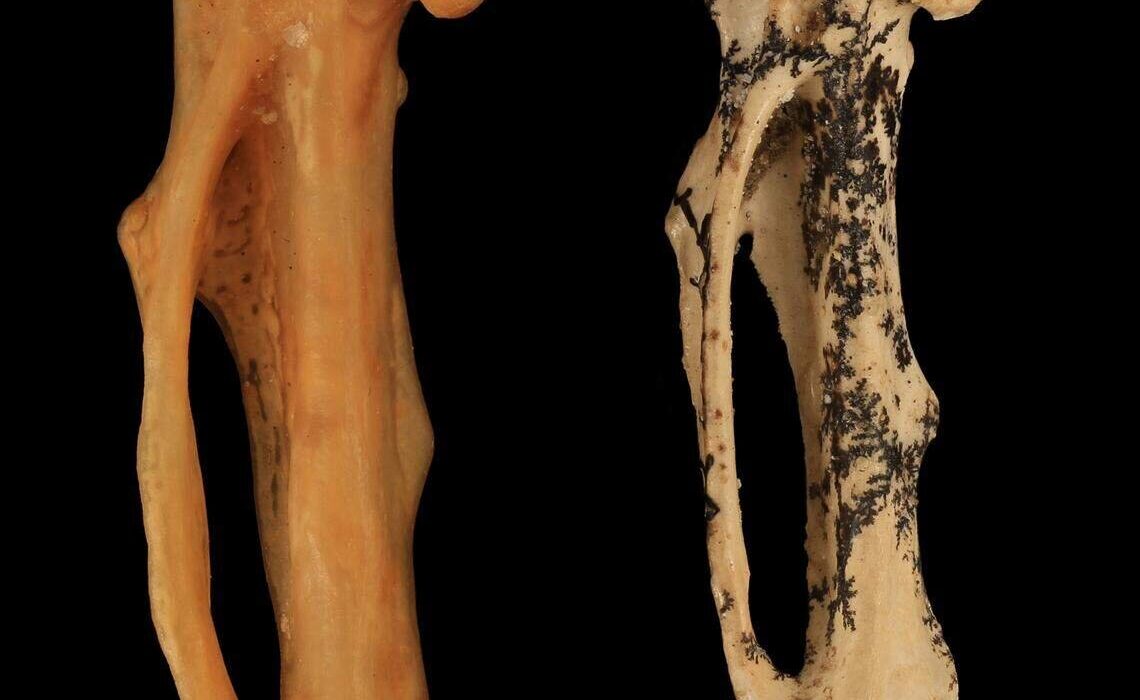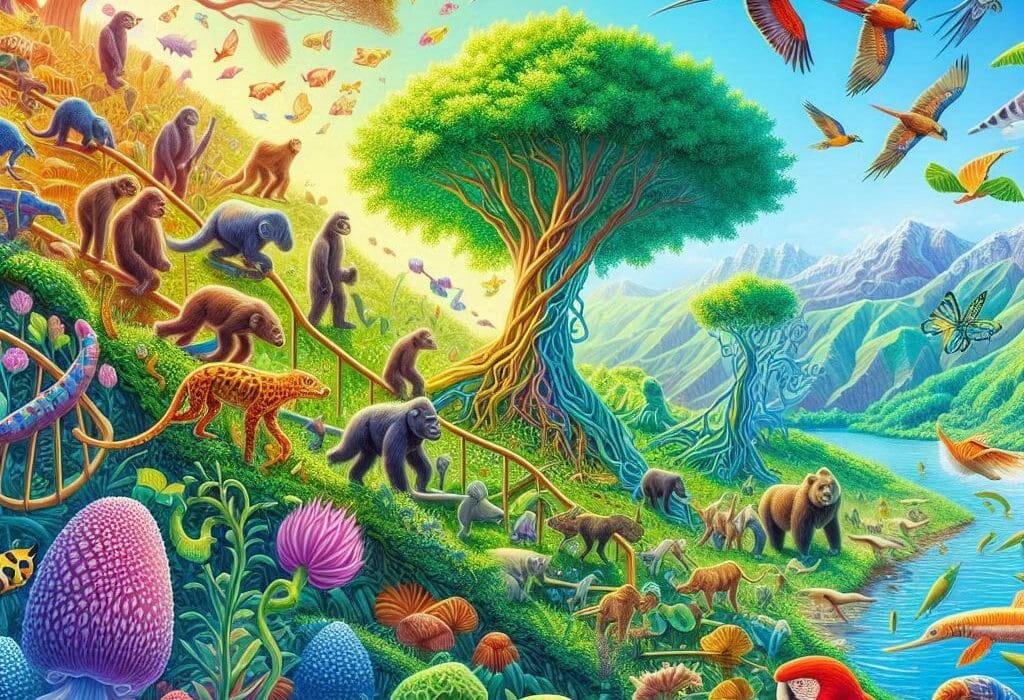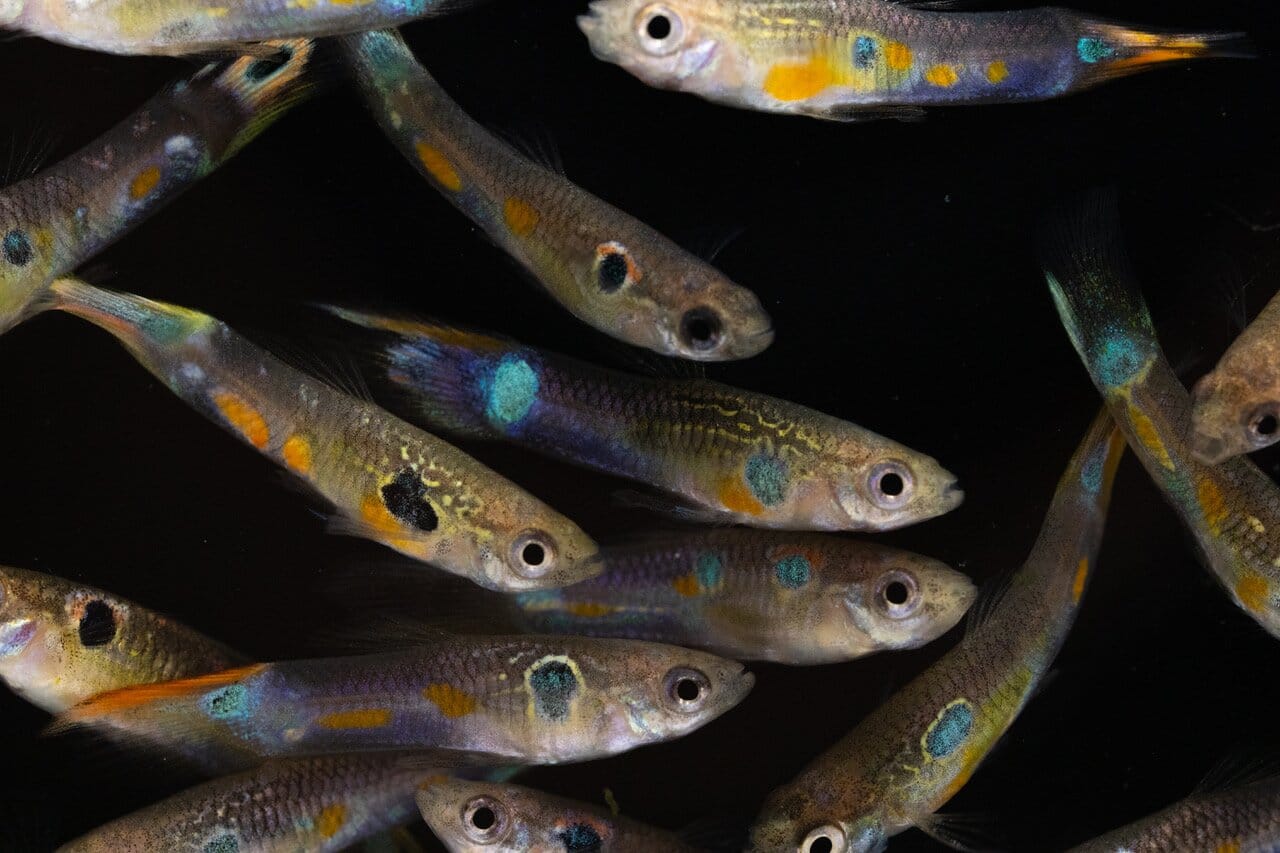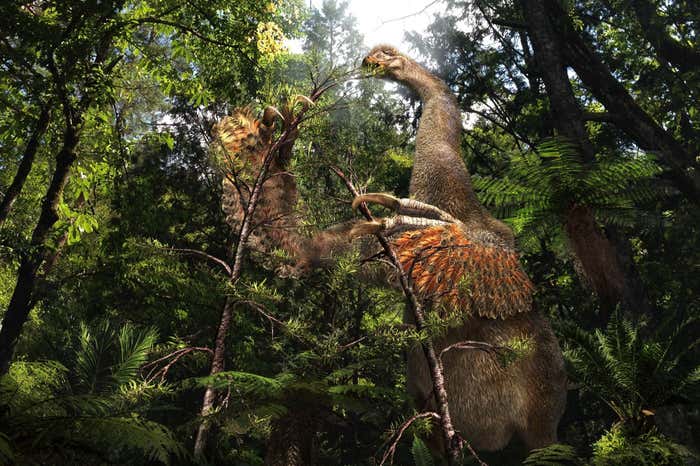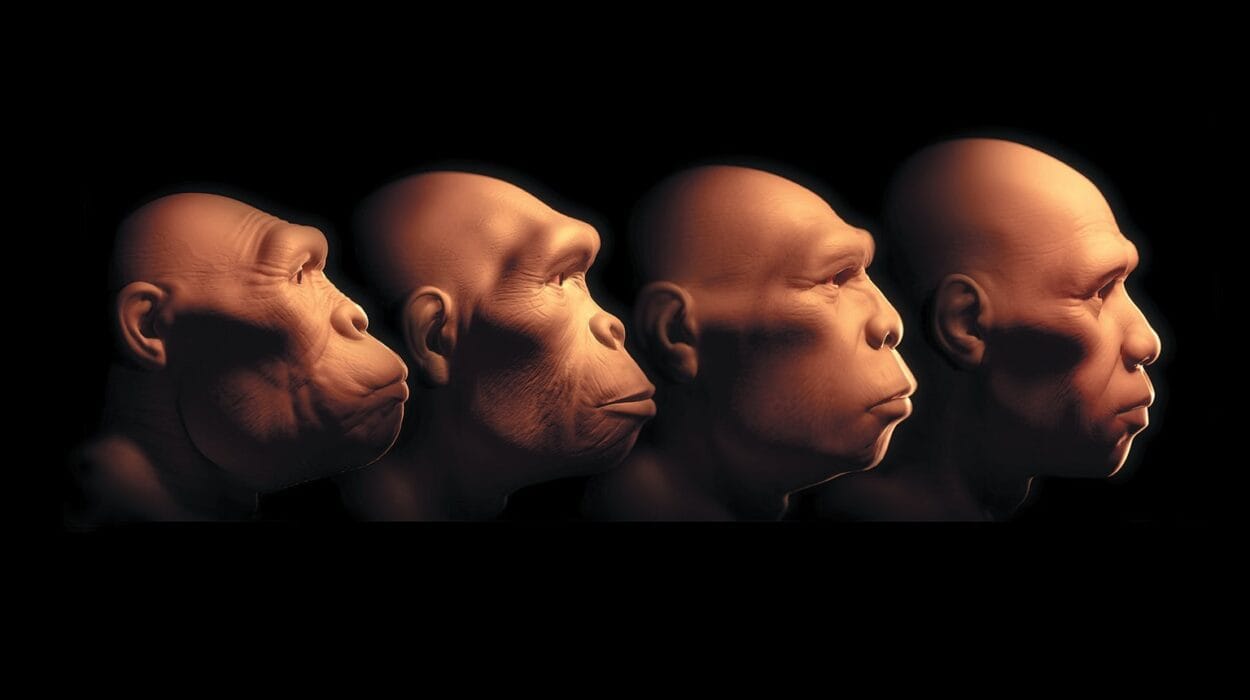There are few natural substances on Earth more enchanting than amber. Warm to the touch, glowing with hues of honey and flame, it seems almost alive. When you hold a piece of ancient amber in your hand, you’re not simply admiring a gemstone—you are, quite literally, cradling time. Within it, prehistoric whispers are preserved in exquisite detail: a gossamer-winged fly caught in mid-flight, a delicate fern frond frozen forever, a spider eternally weaving a web that will never finish.
Amber is not just beautiful; it is one of Earth’s most evocative windows into prehistoric life. Encased within these golden drops are fossils so perfectly preserved that they offer insights into creatures and ecosystems long lost to time. But what exactly is amber? Where does it come from? And how do living organisms become sealed inside it, trapped in a timeless embrace for millions of years?
To truly understand amber and the fossils it holds, we must travel back in time—far before humans, even before the dinosaurs roamed the Earth—to a world thick with towering conifers and resinous forests, where the story of amber begins.
Born From Trees: The Origins of Amber
Amber begins its journey not as a rock, but as a secretion—tree resin, to be precise. Not to be confused with sap (which circulates nutrients through a plant), resin is a sticky, protective substance produced by certain trees, especially conifers, in response to injury or attack. When a tree’s bark is damaged—by wind, insects, lightning, or disease—it begins to ooze resin as a defense mechanism. This viscous liquid seeps from the wound, hardens on contact with air, and forms a protective barrier that seals the wound and wards off harmful bacteria, fungi, and insects.
Millions of years ago, during the Carboniferous, Permian, and especially the Mesozoic and early Cenozoic eras, Earth was home to vast forests rich in resin-producing trees. These ancient forests, alive with buzzing insects, feathered reptiles, and flowering plants, were the amber factories of the distant past.
As the resin dripped from branches and trunks, it occasionally captured fragments of the forest: a beetle crawling over the bark, a speck of moss, a wisp of hair from a passing mammal. These unlucky (or perhaps very lucky, depending on your perspective) organisms were engulfed in the sticky ooze and sealed away from the ravages of time. Over thousands and eventually millions of years, layers of sediment buried the hardened resin, subjecting it to geological heat and pressure. This slow process of polymerization and oxidation transformed the once-sticky resin into the fossilized material we call amber.
From Liquid to Gemstone: The Science of Fossilization in Resin
Not all tree resin becomes amber. In fact, most of it decays, biodegrades, or is washed away long before it has the chance to fossilize. For resin to survive the long road to becoming amber, several conditions must align perfectly.
First, the resin must resist decomposition. This means it must be chemically stable enough to survive microbial attack and environmental decay. Certain trees, like the extinct relatives of modern-day Agathis or Araucaria, produced resin with specific chemical compositions that made it more resilient.
Second, the resin must be rapidly buried and sealed away from oxygen. This is vital for the preservation of organic material inside. Insect-laden resin that remains on the forest floor exposed to air typically darkens and breaks down. But if it is buried in mud, sand, or under leaf litter quickly enough, it becomes shielded from the elements.
Once buried, the resin begins a slow geological transformation. Over thousands to millions of years, the volatile oils evaporate, and the resin undergoes molecular changes. These changes, known as polymerization, cause the resin’s molecules to link together, forming a stable, solid structure. Eventually, after prolonged exposure to pressure and time, the resin becomes the hardened, translucent fossil we call amber.
Interestingly, not all amber is the same. Its chemical makeup and age vary by region, and different amber deposits around the world yield different colors, transparencies, and types of inclusions. Some are as old as 300 million years; others are relatively young—just a few million years old. The most famous and scientifically valuable deposits, however, are usually between 30 and 100 million years old.
Time Travelers Trapped in Gold
What makes amber so scientifically valuable is not the resin itself but what it sometimes contains: fossils. Unlike fossils found in rock, which are often flattened, fragmented, or mineralized beyond recognition, amber fossils are three-dimensional and frequently preserve even the most delicate features in astonishing detail. A midge’s iridescent wing scales, a spider’s spinning apparatus, or the fine hairs on a beetle’s leg—all can be preserved with clarity unmatched by any other fossilization method.
Amber acts like nature’s embalming fluid. Its rapid encapsulation protects organic tissues from decay, while its chemical composition inhibits bacterial activity. In some cases, even soft tissues—eyes, muscles, and perhaps even DNA fragments—may survive for millions of years, although claims of DNA preservation remain controversial and rare.
Insects are the most common inclusions. Ants, flies, mosquitoes, and beetles were all active in resin-producing forests, and their small size made them easy targets. Arachnids—spiders, mites, and ticks—are also frequently found. Occasionally, fragments of larger animals become trapped: feathers from birds or dinosaurs, lizards, froglets, and once in a while, a mammal hair or claw.
Plant inclusions are equally illuminating. Pollen grains, fern spores, flower parts, and leaf fragments give scientists a detailed view of ancient flora. Even trapped air bubbles in amber can tell us about the atmospheric conditions of ancient Earth—revealing clues about oxygen levels and climate.
Each piece of amber is a snapshot of an ancient ecosystem, capturing a moment that would otherwise be lost to time.
Amber’s Global Footprint
Amber has been found on every continent except Antarctica, though some regions are especially rich in it. The Baltic region (including modern-day Russia, Poland, and Lithuania) hosts the largest and most commercially important amber deposits, dating back about 40–50 million years. Dominican amber, from the Caribbean, is younger—around 15–20 million years old—but prized for its exceptional clarity and diversity of inclusions.
In Myanmar (formerly Burma), amber deposits dating back 99 million years—the mid-Cretaceous period—have yielded some of the most extraordinary finds in recent decades. Among them: a feathered dinosaur tail, a baby bird, and even a tiny amphibian. These discoveries have reshaped our understanding of dinosaur-era ecosystems and the origins of modern birds and reptiles.
The Canadian province of Alberta and parts of the United States, such as New Jersey and Arkansas, also contain amber. Even Australia’s fossil-rich formations occasionally yield amber, though these finds are rarer and less extensively studied.
Each deposit has its own story to tell. The types of resin-producing trees, the age of the deposits, and the surrounding environment all influence what types of life were preserved. Together, they offer a global archive of Earth’s lost biodiversity.
Paleontology in a Drop
For scientists, amber is more than a curiosity—it’s a treasure trove of evolutionary data. With it, paleontologists can study the morphology of ancient insects, trace the coevolution of plants and pollinators, and even identify behaviors frozen in time.
Consider a piece of amber containing two ants engaged in combat, or a spider poised to pounce on a fly. These are not just fossils; they are behavioral fossils. They show interactions, life strategies, and even emotions that fossils in stone could never preserve.
Amber has also revealed the existence of entire groups of extinct organisms. Some insects trapped in amber show no living relatives, hinting at evolutionary branches that vanished entirely. Others reveal the early stages of modern lineages, offering insight into how today’s biodiversity came to be.
Scientists use sophisticated tools—such as synchrotron X-ray microtomography, scanning electron microscopy, and chemical spectroscopy—to peer inside amber without damaging it. These techniques allow them to reconstruct tiny organisms in three dimensions, analyze their biochemistry, and even study ancient pathogens carried by parasitic insects.
Each inclusion tells a story. Together, they form a library of life far more diverse and detailed than any we could imagine from stone alone.
The Human Story of Amber
Humans have long been fascinated by amber. Its glowing beauty, tactile warmth, and captivating contents have inspired myths, religions, and trade routes for millennia. The ancient Greeks believed amber was solidified sunlight; the Chinese valued it as a spiritual amulet. In the Baltic, amber was traded as early as the Neolithic period, forming the basis of the “Amber Road,” a trade route that stretched from the North Sea to the Mediterranean.
Amber was prized not just for ornamentation but for its supposed magical and medicinal properties. It was worn to ward off evil, ground to a powder to treat disease, and burned as incense to purify the air.
During the 18th century, the Prussian King Frederick William I gifted the Russian Tsar Peter the Great a chamber made entirely of amber panels—the famous Amber Room, later looted by the Nazis during World War II and still missing today. Its legend adds a layer of intrigue and mystique to amber’s already storied history.
Even today, amber holds the imagination of scientists, collectors, and artists alike. Museums house vast collections; jewelers craft it into fine pieces; and paleontologists scan it for clues that could unlock the secrets of evolution.
Jurassic Park and the DNA Question
It’s impossible to talk about amber without mentioning one of pop culture’s most enduring fantasies: “Jurassic Park.” In Michael Crichton’s novel and the blockbuster films, scientists extract dinosaur DNA from mosquitoes trapped in amber and use it to clone the long-extinct beasts.
While compelling fiction, the reality is more complex. DNA is a fragile molecule that degrades quickly after death. Under ideal conditions—cold, dry, and sealed—it might survive tens of thousands of years, possibly up to a million. But the 65+ million-year age of amber from the age of dinosaurs makes the survival of usable DNA extremely unlikely.
Scientists have searched extensively for ancient DNA in amber-trapped organisms. While some studies have reported trace fragments, contamination is a persistent issue, and no study has yet confirmed a complete genome. Still, the possibility of retrieving ancient proteins, lipids, or even microbiomes remains open and exciting.
Amber may not yield living dinosaurs, but it offers something just as profound: a direct, tangible connection to the long-lost world in which they lived.
A Legacy Encased in Light
Amber is not merely a gem, or even just a fossil—it is a testament to the incredible resilience of nature and the intricate dance of life across deep time. It allows us to see, not just imagine, how a Cretaceous forest pulsed with insects, or how a Miocene flower opened to a humming bee.
These tiny golden relics offer something rare and precious: intimacy. Unlike a dinosaur skeleton displayed behind glass, an insect in amber brings us eye to eye with a creature from a vanished world. We can see it as it was—delicate, vibrant, real. There is something humbling in that closeness. It reminds us that time, however vast, is not an unbridgeable chasm. Through amber, we reach across epochs and touch the pulse of life that beats still.
In an age of biodiversity loss and ecological change, amber also serves as a quiet warning. It shows us how rich and strange life once was—and how easily it can disappear. Each inclusion is both a wonder and a whisper, saying: preserve what you have, for time is always flowing, and nothing is forever.
Except, perhaps, a beetle in a drop of golden resin.

